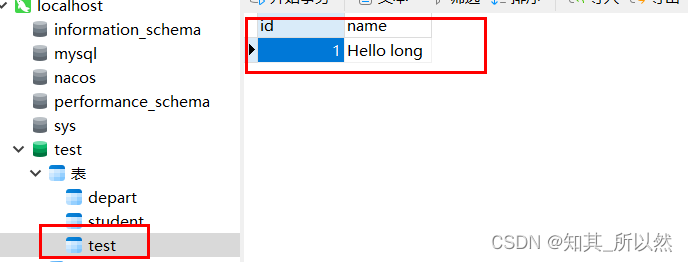Flume 之自定义Sink
发布时间:2024年01月17日
1、简介
? ? ? ? 前文我们介绍了 Flume 如何自定义 Source, 并进行案例演示,本文将接着前文,自定义Sink,在这篇文章中,将使用自定义 Source 和 自定义的 Sink 实现数据传输,让大家快速掌握Flume这门技术。
2、自定义Source
? ? ? ? 自定义Source参考前文:https://blog.csdn.net/zwl2220943286/article/details/135633120
3、自定义Sink
? ? ? ? 本文将Sink定义为mysql。
3.1、引入依赖
<dependency>
<groupId>org.apache.flume</groupId>
<artifactId>flume-ng-core</artifactId>
<version>1.11.0</version>
</dependency>
<dependency>
<groupId>mysql</groupId>
<artifactId>mysql-connector-java</artifactId>
<version>8.0.33</version>
</dependency>3.2、自定义Sink
3.2.1、Sink代码
import com.weilong.flumeselfdefinition.util.MysqlConfig;
import org.apache.flume.*;
import org.apache.flume.conf.Configurable;
import org.apache.flume.sink.AbstractSink;
import org.slf4j.Logger;
import org.slf4j.LoggerFactory;
public class MySink extends AbstractSink implements Configurable {
private final static Logger log = LoggerFactory.getLogger(MySink.class);
private String url;
private String username;
private String password;
@Override
public Status process() throws EventDeliveryException {
Status status = null;
Channel channel = getChannel();
// channel 支持事务
Transaction thx = channel.getTransaction();
thx.begin();
try {
Event event = channel.take();
String name = new String(event.getBody());
int i = MysqlConfig.insertData(this.url, this.username, this.password, name);
if (i > 0){
log.info("==插入数据库成功==");
}
thx.commit();
status = Status.READY;
} catch (Exception ex){
ex.printStackTrace();
}
return status;
}
@Override
public void configure(Context context) {
String url = context.getString("url");
String username = context.getString("username");
String password = context.getString("password");
this.url = url;
this.username = username;
this.password = password;
}
}
?3.2.2、数据库连接配置:
import java.sql.Connection;
import java.sql.DriverManager;
import java.sql.PreparedStatement;
import java.sql.SQLException;
public class MysqlConfig {
private MysqlConfig(){
}
static {
try {
Class.forName("com.mysql.cj.jdbc.Driver");
}catch (Exception ex){
ex.printStackTrace();
}
}
public static Connection getConnection(String url, String username, String password) throws SQLException {
Connection connection = DriverManager.getConnection(url, username, password);
return connection;
}
public static int insertData(String url, String username,String password, String name){
Connection connection = null;
try{
connection = getConnection(url, username, password);
PreparedStatement preparedStatement = connection.prepareStatement("insert into test(`name`) values( '" + name + "')");
boolean res = preparedStatement.execute();
if (res){
return 1;
}
return 0;
}catch (Exception ex){
ex.printStackTrace();
}finally {
if (connection != null){
try {
connection.close();
}catch (Exception ex){
ex.printStackTrace();
}
}
}
return 0;
}
}
?3.3、Flume 配置文件
? ? ? ? vim?flume-self-source-sink.conf
a1.sources = r1
a1.channels = c1
a1.sinks=k1
# source
a1.sources.r1.type = com.weilong.flumeselfdefinition.MySource
# 自定义 Source 的全限定类名
a1.sources.r1.path = http://192.168.30.3:8088/hello
# 自定义参数
# channel
a1.channels.c1.type = memory
a1.channels.c1.capacity = 1000
a1.channels.c1.transactionCapacity = 100
# 自定义Sink
a1.sinks.k1.type = com.weilong.flumeselfdefinition.MySink
a1.sinks.k1.url = jdbc:mysql://192.168.30.3:3306/test?useUnicode=true&characterEncoding=utf8&serverTimezone=UTC
a1.sinks.k1.username = root
a1.sinks.k1.password = 146815
# bind
a1.sources.r1.channels = c1
a1.sinks.k1.channel = c1
4、将jar包放入lib目录?
?4.1、将自定义jar包放入lib目录
?

4.2、将数据库驱动jar包放入lib目录
????????驱动jar包下载地址:https://mvnrepository.com/artifact/mysql/mysql-connector-java

注:mysql 驱动jar包不放进lib,会出现驱动类找不到。?
5、启动 Flume
bin/flume-ng agent -c conf/ -n a1 -f testconf/flume-self-source-sink.conf -Dflume.root.logger=INFO,console注:启动Flume 之前,自定义 web 服务也要启动。

?6、结果
成功保存进数据库。

7、总结?
? ? ? ? ?本文结合前文完成 Flume 的 Source 和 Sink 的自定义,帮助大家能够完成各种场景下的Flume的使用。关于更高级Flume的知识,关注下面公众号。
????????本人是一个从小白自学计算机技术,对运维、后端、各种中间件技术、大数据等有一定的学习心得,想获取自学总结资料(pdf版本)或者希望共同学习,关注微信公众号:it自学社团。后台回复相应技术名称/技术点即可获得。(本人学习宗旨:学会了就要免费分享)

文章来源:https://blog.csdn.net/zwl2220943286/article/details/135636657
本文来自互联网用户投稿,该文观点仅代表作者本人,不代表本站立场。本站仅提供信息存储空间服务,不拥有所有权,不承担相关法律责任。 如若内容造成侵权/违法违规/事实不符,请联系我的编程经验分享网邮箱:chenni525@qq.com进行投诉反馈,一经查实,立即删除!
本文来自互联网用户投稿,该文观点仅代表作者本人,不代表本站立场。本站仅提供信息存储空间服务,不拥有所有权,不承担相关法律责任。 如若内容造成侵权/违法违规/事实不符,请联系我的编程经验分享网邮箱:chenni525@qq.com进行投诉反馈,一经查实,立即删除!